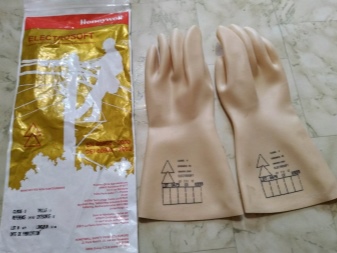Dielectric gloves length

Anyone who has ever worked with high voltage devices should be aware of dielectric gloves. They protect the electrician's hands from electric shock and allow you to protect yourself from electric shock. The permissible length of dielectric gloves is the most important indicator, because even a small deviation from the norms can lead to dire consequences.

What are the requirements based on?
It is clear that all standards for dielectric gloves are not taken from the ceiling. When it comes to working with high voltage installations, there can be no gaps, because they can cost human life. Before being put into operation, dielectric gloves undergo very important and difficult tests. The main test is considered to be immersed in energized water. They are immersed in water so that it is both outside and inside, but at the same time the upper edge of the sleeve remains dry. Then a current is passed through the water, and special devices measure the level of voltage passing through the protective layer. If the indicator is too high, they will not be allowed for sale and will be sent to marriage.
As for the length of the gloves, it should be such as to completely protect the hands of the electrician from stress, but at the same time not interfere with his work.
There are generally accepted norms for the length of dielectric gloves, however, it goes without saying that in some cases it is necessary to deviate from these norms, because different people may have different anatomical proportions.


What is the specified length?
Currently, the minimum recommended length for dielectric gloves is 35 centimeters. This is the length from the fingers to the elbow for the average person. If the sleeve is shorter, then part of the arm will remain open. Because of this, the hand will not be completely protected, and the person may receive an electric shock. Therefore, the length should be exactly that, and shorter gloves are not produced by specialized factories at all. Longer gloves are acceptable but not recommended. A sleeve that is too long can make it difficult to bend the arm at the elbow. Considering that we are talking about working with very delicate equipment, such difficulties can lead to serious consequences.


How to choose?
Since different people may have different arm sizes, the recommended sleeve length will be different for them. Ideally, the glove should completely cover the area of the hand from the fingertips to the elbow, but not the elbow itself. Although it is not always possible to find a suitable length, since most manufacturers do not deviate from the standards by a millimeter. An important fact: tucking the edges of the sleeves is prohibited, since their inner layer is not protective and conducts current. If the sleeve is too long, you have to put up with discomfort.
Much better is the case with the size of the glove. Anyone can choose for themselves the option that is ideal for their arm circumference. However, there are a couple of nuances here. If you are working in a comfortable temperature, somewhere indoors, then your best bet is to choose gloves that fit your hand perfectly. But if you are going to work outside during the cold or hot season, then it is better to take gloves a couple of sizes larger.


The fact is that latex, from which dielectric gloves are made, does not retain cold or heat very well. Because of this, in the cold season, you will most likely need to wear two pairs of gloves - dielectric and under them ordinary (or even insulated). And in the heat, the material tightly adhering to the skin will create additional discomfort. You also need to take care of the length of the socket. You will most likely have to pull it over your regular clothes, so consider this beforehand.
There are also five-finger and two-finger dielectric gloves. The two-finger option is usually cheaper, but for obvious reasons, it is not very convenient. However, it is fine if you do not need to do delicate work. The last but most important point to look at when buying dielectric gloves is their condition.
The gloves should be free of any damage, even the smallest. And they must also have a quality stamp.


Every time before putting on gloves, they must be inspected. In addition to the absence of damage, the gloves should also be free of any stains or moisture, since any substances can increase the contact of the current. Do not neglect this check, because it can save your life.


Dielectric gloves are presented in the video below.












The comment was sent successfully.